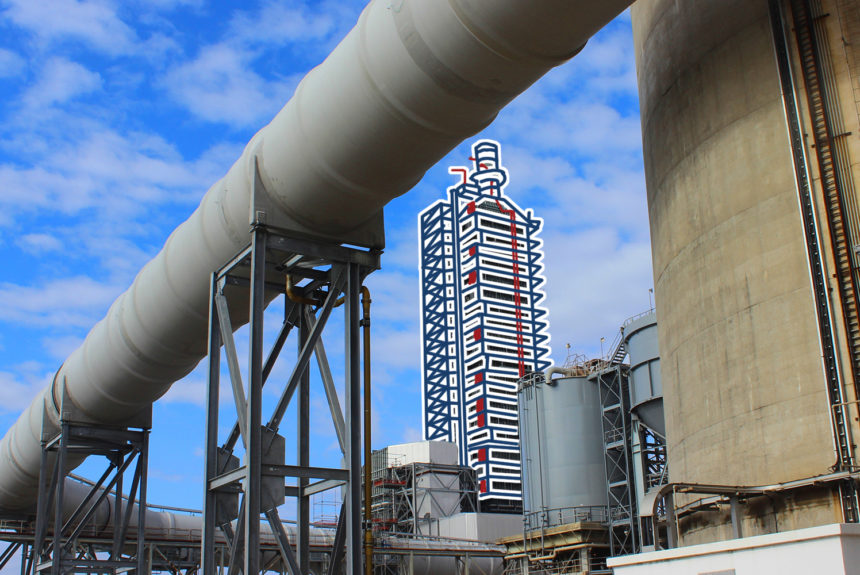Article originally from ClearPath
Overview
Carbon capture, utilization and storage (“CCS” or “CCUS”) refers to a suite of technologies that selectively capture carbon dioxide from industrial sources or the atmosphere, where the captured molecules are geologically stored or “recycled” to make products.
Carbon Capture Projects Have Many Options

The technology is widely recognized as a critical emission reduction technology because it can significantly reduce emissions from new and existing fossil power plants, mitigate industrial emissions (e.g. cement, steel and ethanol), and achieve negative emissions under certain applications.
Economic Potential
Carbon capture projects were first deployed in the United States nearly half a century ago during the energy crisis. Petroleum engineers discovered that injecting carbon dioxide into mature oil fields often increases oil production by increasing reservoir pressure and increasing miscibility, in a process called “enhanced oil recovery”. Over 5,000 miles of carbon dioxide pipelines have been built across the United States, directly contributing to about 3% of total United States oil production. Carbon dioxide is so useful for oil production, naturally occurring carbon dioxide is actively mined for and sold like natural gas to producers.

Applying carbon capture systems to power plants is a more sophisticated and expensive process. To date, only two carbon capture projects in the world have been installed at a power plant.
One of the two – NRG’s Petra Nova project- captures up to 5,000 tons of carbon dioxide each day from a Texas coal plant. The carbon dioxide is then sold to an oil company that pump them underground where it helps produce oil, in a process called “enhanced oil recovery”. The project is expected to increase production from 300 barrels per day to 15,000 barrels. Multiple studies have shown enhanced oil recovery results in low-carbon barrels of oil.
How does enhanced oil recovery create low-carbon oil?

Enhanced oil recovery projects can be replicated in many other parts of the United States. If technologies come down in line with Department of Energy goals, a ClearPath and Carbon Utilization Research Council (CURC) study found that over 17GW of carbon capture potential could be deployed for enhanced oil recovery with significant job creation and macroeconomic benefits by 2040.
Environmental Potential
Systems are typically designed to capture 90% or more of total carbon dioxide emissions, consistent with deep decarbonization. Carbon capture is also an economic decarbonization option. The latest Intergovernmental Panel on Climate Change assessment report found meeting Paris Agreement targets were 138% more expensive when carbon capture was not included as a mitigation option. The International Energy Agency study estimates the world will need 2,500 large carbon capture facilities to meet Paris targets. Similarly, Shell estimates 10,000 large facilities are needed in the next 50 years. Today, there are only about two dozen.
According to the International Energy Agency, only 4 of 37 clean energy technologies are not on track. Carbon capture projects are not an exception: less than two dozen large carbon capture projects have been built around the world. Systems have historically been applied at natural gas and bioenergy facilities, where the flue gas streams contain higher concentrations of carbon dioxide and capture costs are lower. In some industries, such as cement production, carbon dioxide is created as a chemical process and carbon capture is the only option for decarbonization.
Projects face a number of hurdles including unique environmental permitting requirements, financing challenges associated with high capital cost and often first-of-a-kind commercial projects, and the slow development of climate policies around the world. Although carbon capture technologies have been traditionally underfunded, receiving about one hundredth of all clean energy investment, a recent bipartisan tax credit for carbon capture projects has stimulated commercial interest in new projects.
Private-public partnerships are currently underway to improve the economics of carbon capture projects by reducing the costs of carbon capture and carbon storage techniques.
Recent Developments
Despite the cancellation of the Kemper Project, carbon capture has enjoyed a recent string of successes:
- Illinois Industrial Carbon Capture and Storage Project (2017) – Archer Daniels Midland launched the first large scale carbon capture facility at an ethanol facility for the purposes of geologic sequestration. It has a capacity of 1 million tons of carbon dioxide per year. Read More
- Petra Nova (2017) – NRG successfully commercialized the first carbon capture system at a U.S. coal power plant on time and on budget. The project, located outside of Houston, is designed to capture 1.6 million tons of carbon dioxide per year. Read More
- NET Power (2018) – A redesigned fossil power plant that promises to produce electricity and pipeline-ready carbon dioxide competitive with natural gas generation today. Initial testing commenced at a $150M pilot project in Texas to prove the concept this year. Supporters include: Exelon, Occidental Petroleum, McDermott, and Toshiba. Read More
- Shand Power Station (2018) – Canadian utility SaskPower completed a scoping study for a carbon capture facility at its Shand coal power plant. Its projected costs are 67% cheaper than first-generation technologies and represent a step change in cost reductions. Read More
The views and opinions expressed are those of the author’s and do not necessarily reflect the official policy or position of C3.
